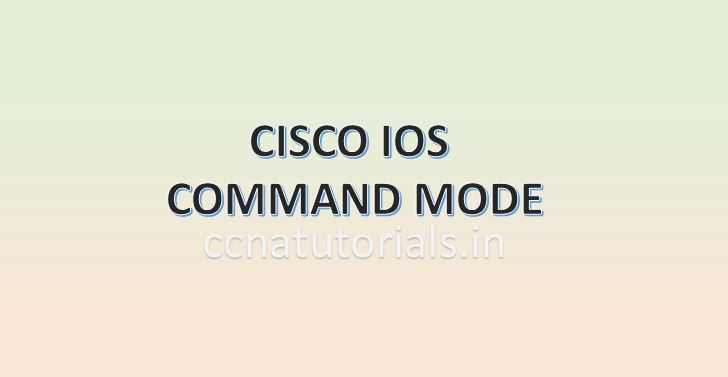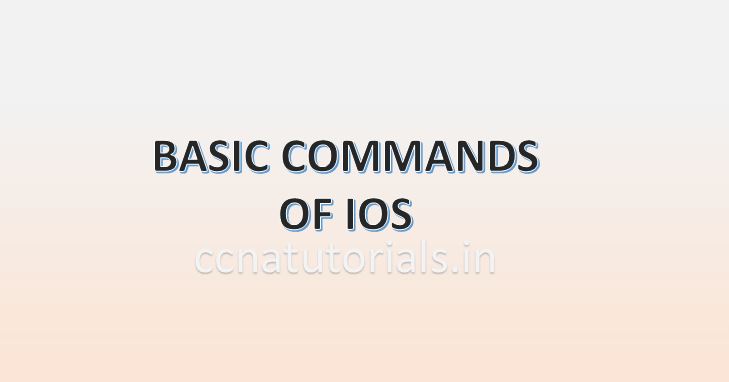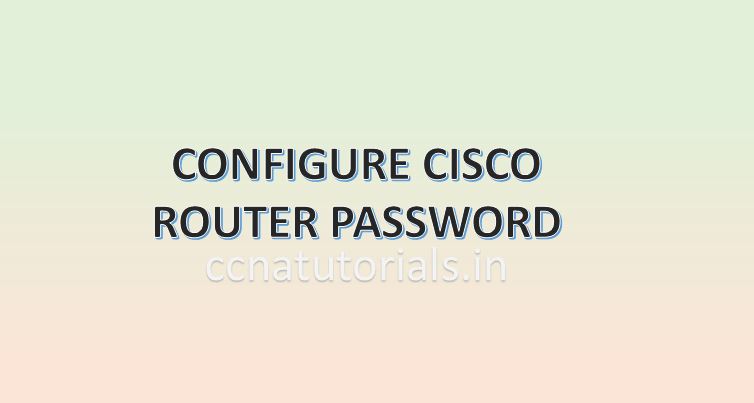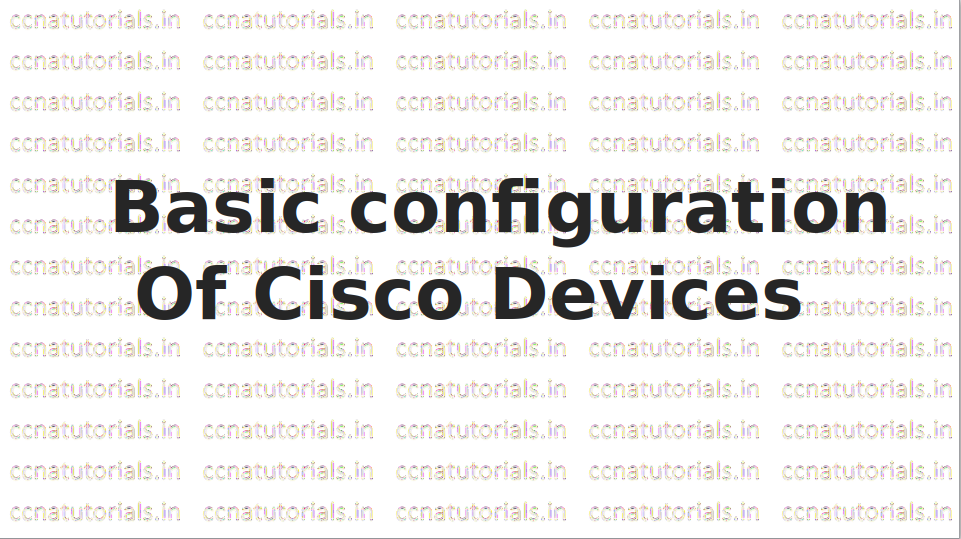In this article I describe the Cisco IOS command modes in Cisco IOS like routers and switches. IOS is acronym for Internetwork Operating System which is related to Cisco networking devices. IOS Internetwork Operating System provides the facility to configure and maintain the networking devices in the network by using some Cisco IOS command modes. The network administrator can change the configuration and maintain the networking device in a network by using Cisco IOS command modes.
IOS is an application which run as operating system for the networking devices like router or switch. Command Line Interface CLI in Cisco IOS provide a command line interface to a remote computer with various Cisco IOS command modes for network administrator. IOS load after a fix booting sequence every time when we boot the router or switch. So before learning about the Cisco IOS command modes lets see some basic fundamentals of IOS Internetwork Operating System. You can also read the IOS booting sequence here.
IOS Internetwork Operating System
IOS Internetwork Operating System is a Cisco propriety for Cisco networking devices like routers and switches. Network administrator can work with various Cisco IOS command modes of any networking device from a computer in the network. CLI is generally know as the Command Line Interface CLI in Cisco IOS. All the routing configuration and other settings saved in the IOS Internetwork Operating System of router. IOS Internetwork Operating System provide to do any changes on any interface or the router or switch. IOS Internetwork Operating System provide to maintain the networking device from a very far location remotely. IOS of Cisco can be integrated with other networking devices like IBM and SNA. The Cisco IOS command modes are very user friendly, the user can take the help about any command from CLI for a device.
The IOS Internetwork Operating System allow to configure the encryption, routing and authentication in the router or switches. IOS Internetwork Operating System have three variants XE, XR and Nexus. The XE version available with aggregation service routers and catalyst switches. XR version available with carrier routers. Nexus allow to configure the Nexus family devices. Before IOS Internetwork Operating System Cisco run the CatOS on its networking devices. IOS Internetwork Operating System is operating system independent means you can run the IOS on windows as well as on Linux or Unix operating system. The IOS developed in the decade of 1980 for Cisco routers.
CLI for Cisco IOS command modes
The Command Line Interface CLI in Cisco IOS provides various Cisco IOS command modes with some preset commands to maintain and configure the networking devices. There are multiple Cisco IOS command modes provided by the Command Line Interface CLI in Cisco IOS. The command modes are EXEC mode, Privilege Exec mode, Global Configuration mode, ROMMON mode and setup mode. Each mode provide some additional features of various level for configuration the router or switch. The router and switches are microprocessor based so the IOS Internetwork Operating System works like an operating system for computer. When we start the computer the operating system of computer boot in a fix sequence. Similarly the IOS Internetwork Operating System have a fix booting sequence.
Types of memory used by Cisco routers for IOS Internetwork Operating System
There are multiple types of memory available in the router which takes part in the IOS Internetwork Operating System. It is necessary to know about the various types of memory used in router for various purpose. We can say that each memory is responsible for different task for the IOS Internetwork Operating System. A Cisco router contains four main memories RAM, ROM, NVRAM and Flash memory.
RAM stands for Random Access Memory which is like a RAM in any computer. In a Router, RAM stores the running configuration and routing table with routing protocol. The IOS loaded in the RAM After the completion of IOS Booting sequence in the router. RAM stores the data until the router is power ON. After shutting down the router, all data stored in RAM will erase automatically.
ROM the Read Only Memory stores the data permanently in it. The ROM loaded the previously saved configuration in IOS Internetwork Operating System of router. Mostly the bootstrap start up program stored in ROM. The initial function known as POST is also stored in ROM and run during the first step of IOS Booting sequence in router.
NVRAM memory is a type of RAM but it is Non-Volatile. The data saved previously in the NVRAM loaded after completion of IOS Booting sequence in router. It means the data stored in it doesn’t depends on Power on or off. We can write the data multiple times on it. ROM is read only memory. The main difference between NVRAM and ROM is that data of NVRAM can be changed by configuration.
Another type of memory available in router is Flash memory. Flash memory keep save the IOS image. Flash memory is read and writable memory. In case of any error in the IOS Booting sequence the image of IOS can be used for booting the router.
Cisco IOS command modes in CLI brief
The Command Line Interface CLI in Cisco IOS allow user to maintain and configure the router by using various Cisco IOS command modes. All internetworking devices provides an Command Line Interface CLI in Cisco IOS for configuration and maintenance. All Cisco routers and switches runs on IOS. IOS stores the configuration, link states, protocols and everything what we use for internetworking.
The configuration and setting of switch and routers can be done via Command Line Interface CLI in Cisco IOS. The Command Line Interface CLI in Cisco IOS provide the Command line interface to the user. The CLI works on Cisco IOS command modes only. The CLI in Cisco IOS is command line interface for working with IOS. You must know the commands before going to configure any router or switch. You can also refer the CLI for various commands by typing the question mark. In this article we discuss about Command Line Interface CLI in Cisco IOS basics only.
Cisco commands run in command line interface of Cisco IOS. The commands basically divided into four Cisco IOS command modes. Each command mode have a separate limitations for various level configuration. Different settings of router can be configured from different command modes. You can identify the command mode of router by the sign appears in the last at the command prompt syntax. Configuration level of router are divided according to command modes.
The hostname of router in this article is ccnatutorials.
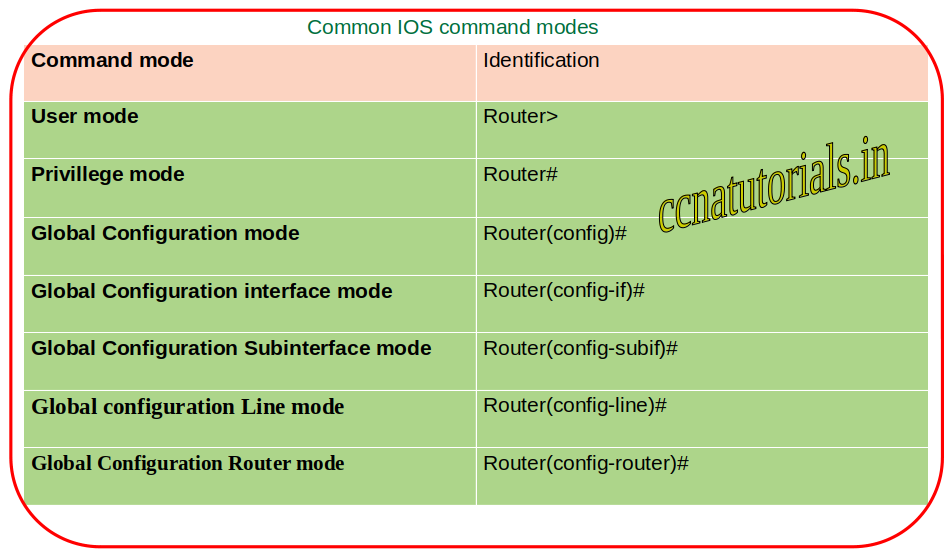
Types of Cisco IOS command modes
Cisco IOS command modes are of Four types User mode, privileged mode, Global configuration mode and ROMMON mode. Command line will prompt to these mode in a sequence when router is power on. Initially command line prompt in user mode then in privileged mode and later on Global configuration mode. It is not possible to got the global configuration mode direct after power on the router. So let’s discuss about the Cisco IOS command mode in brief.
User mode of Cisco IOS command modes
User mode can be identified by > symbol after router name like Router> . User mode is the basic mode of Cisco IOS command modes. The default mode is called user mode. Router initially remains in user mode. In user mode the > prompt following the router name. In user mode only basic common commands can be executed. Port level configuration can not be done in user mode. Below image shown the commands available in user mode in a Cisco router.
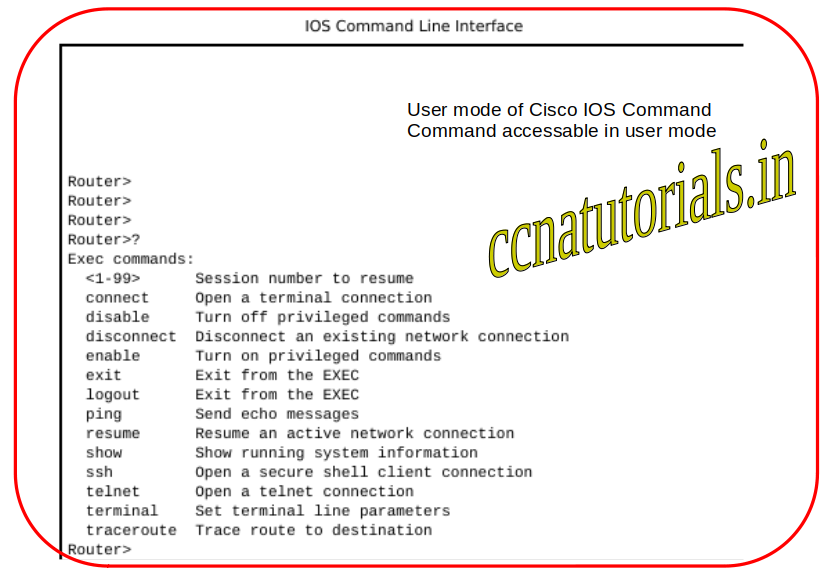
Privilege mode of Cisco IOS command modes.
Privilege mode can by identified with # symbol at the end of prompt. Router# is the example of privilege mode. Privilege mode is the second level command mode. Router turns into privilege mode by running enable command in user mode. In privilege mode you can see the system configuration. Router configuration mode accessed in privilege mode. You can restrict the privilege mode for every one by setting up an enable password. There are another security level to enter in privilege mode, it can be got by setup an enable secret password.
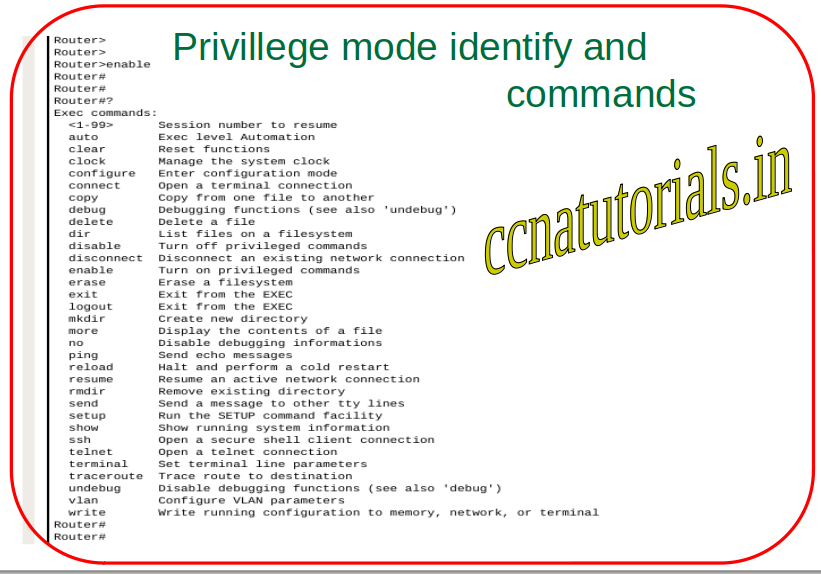
Global Configuration mode of Cisco IOS command modes
Global configuration mode is also identify by # symbol at the end of prompt. The difference between privilege and global configuration mode can be identify by prompt.
Router# is privilege mode and Router(config)# is Global configuration mode. Global configuration mode allow user to configure the router running system configuration. You can change privilege mode to global configuration mode by running the “config terminal” command in privilege mode.
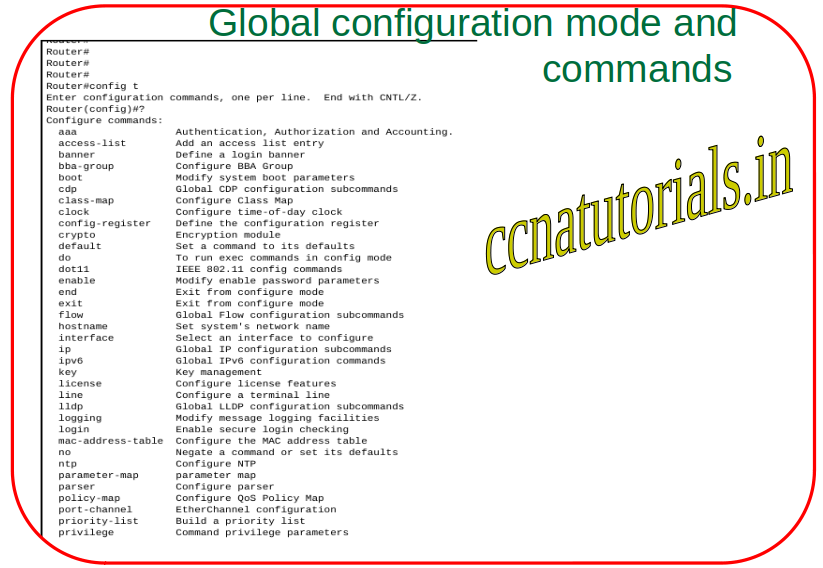
Global configuration mode allow to configure the port level settings. According to these setting global configuration mode can be divided into various sub-modes. We can say these sub modes like interface mode, sub-interface mode line modes and router mode etc.
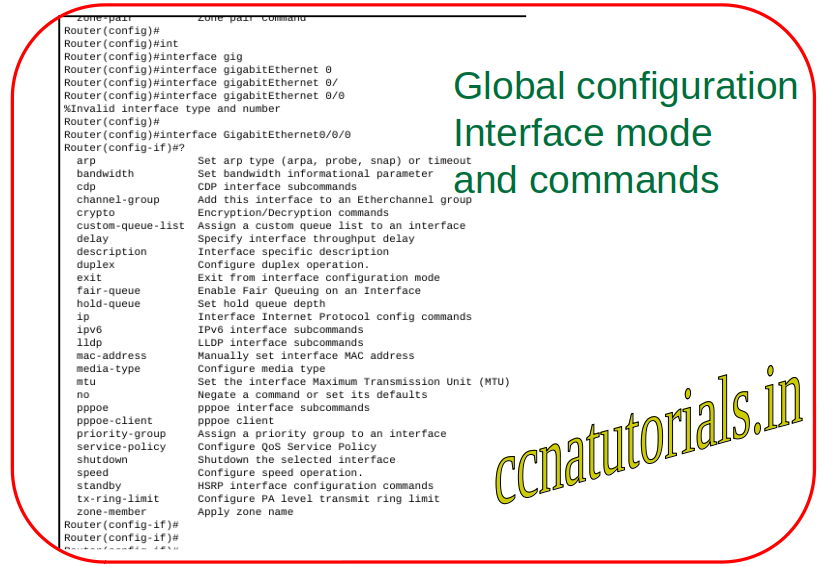
ROMMON mode of Cisco IOS command modes
ROMMON mode is used to recover the access password or change the passwords. The ROMMON mode provide the facility to keep the backup of configuration of a router. To go into this mode press the crtl+break while the router is booting.
In this article I described the Cisco IOS command modes in Cisco networking devices. I hope you found this article helpful. For any query or suggestion on this article contact us or drop a comment below. Your suggestions are always welcome by us.
